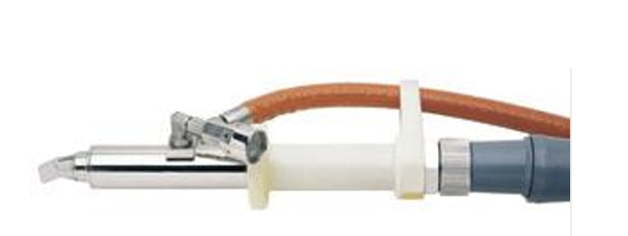Meat Inspection & HACCP
Functions of Meat Inspection
Detection and destruction of diseased and/or contaminated meat
Assurance of clean and sanitary handling and preparation
Minimization of microbiological contamination of meat
Prevention of false labeling
Application of the inspection stamp
Jurisdiction of Meat Inspection
Federal Government: meat is to be sold in interstate or foreign commerce
State Government: sold only in intrastate commerce
Acts Governing Meat Inspection
Wholesome Meat Act (1967)
“Equal To” Law
requires state inspection to be on par with federal inspections
Administered by USDA-FSIS
Texas Meat & Poultry Inspection Act (1969)
Administered by Texas Department of State Health Services
Talmadge-Aiken Agreement
Federally inspected but staffed by state employees
Exemptions within Inspection
Curtis Amendment: Custom slaughter/production of farm animals and game animals for farmers and their families
Farmers Exemption: Meat is to be used by the farmer for his own use, for his family and non-paying guests
Retail Exemption: Calendar year retail dollar limit set by FSIS, OR 25% of the dollar value of retail product is sent to hotels and restaurants
Postmortem Inspection
US Inspected and Passed
99% pass rate
US Inspected and Condemned
Postmortem ONLY, can include temporary US Retained product/carcass
Passed for Cooking
Viral - cook to certain temperatures for a specific amount of time
Passed for Refrigeration
Parasitic – Hold at certain temperatures for x amount of days
more likely to be tossed
Product Inspection
Reinspection Privilege – to assure a previously acceptable cut, carcass, or product has not become sour, tainted, spoiled or adulterated
Reasons for condemnation:
tainted, sour or putrid
unclean or contaminated
pork is prone to spoilage due to its high fat content, making it particularly sensitive to both bacterial contamination and the development of off-odors.
Imported Meat Products
All meats are inspected in country of origin and tested at the port of entry for the following:
Cleanliness
Labeling
Water Content
Net Weight
Fat Percentages
Wholesomeness
Laboratory Determinations & Assays
Regional USDA lab and certified laboratories determine:
Fat concentrations and percentages
Water content
Curing Agents
Vegetable protein extenders
Meat Sources
Chemical Residues
Condemned Product
Control & Restriction
Rendering: for inedible fats, greases, and oils
Tanking: animal feed & fertilizer
Incineration: burning
Chemical Denaturing: Kerosene or FD&C #3
Production & Carcass Internventions
Prevention of Microbial Contamination
Trimming is the first response when visible contamination is present
Steam vacuum for localized contamination
Hide Washing
Carcass Interventions
Hot Water Wash
Steam pasterurization
Organic Acid Spraying
Spinal Cord Removal (and other SRM’s)
Irradiation
Spinal Cord Removal & Localized Steam Pasteurization
HACCP
Hazard Analysis Critical Control Point Systems
Utilized first by Pillsbury and NASA
HACCP Final Rule (1996)
Mandatory HACCP systems for all plants
Microbiological testing (generic E. coli and Salmonella)
SSOP’s, GMP’s, and SOP’s
SSOP: Sanitation Standard Operating Procedures
GMP: Good Manufacturing Practices
SOP: Standard Operating Procedures
Identified 3 types of hazards at every processing step in a facility (Biological, Physical and Chemical)
Principles:
Principle 1: Conduct a hazard analysis
Principle 2: Determine Critical Control Points
Principle 3: Establish Critical Limits
Principle 4: Establish monitoring procedures (EX: thermometers)
Principle 5: Establish corrective actions
Principle 6: Establish verification procedures
must be done by more than one person
Principle 7: Establish record keeping
Food borne Illness
it is an illness transmitted to humans by contaminated food or beverage
Outbreak: incident when 2 or more persons share the same symptoms after ingestion of a food in common
Vulnerable population: children younger than 5 yo, elderly, immunocompromised people
Food Contaminants
Physical: metal shavings, glass, wood, dirt, fingernails, hair, bandages, and bones
Chemical: toxic metal poisoning, cleaners and sanitizers, food additives and allergens
Biological: bacteria, parasites, viruses, and/or toxins
